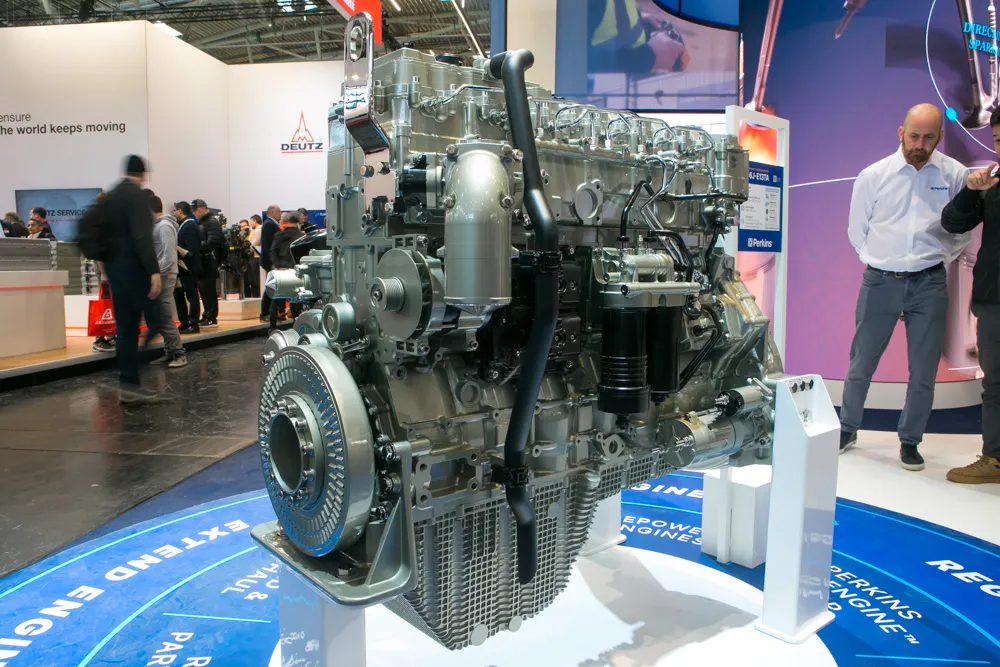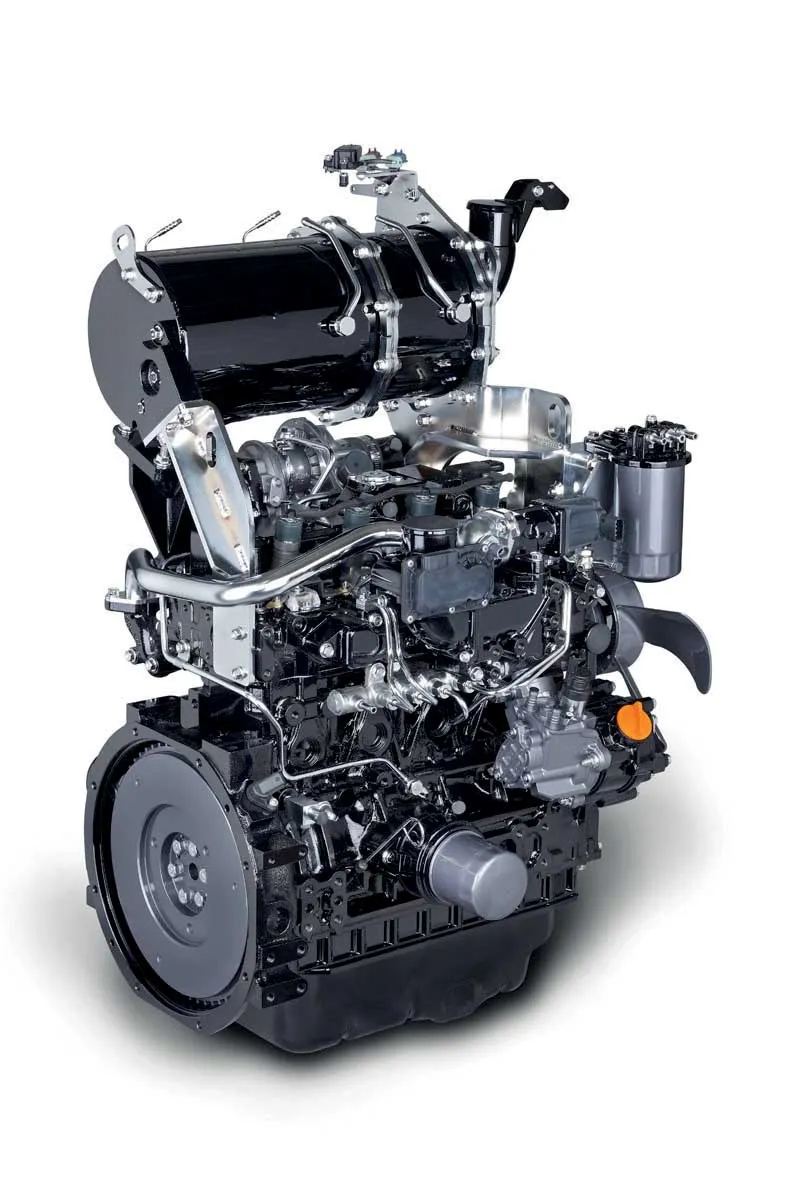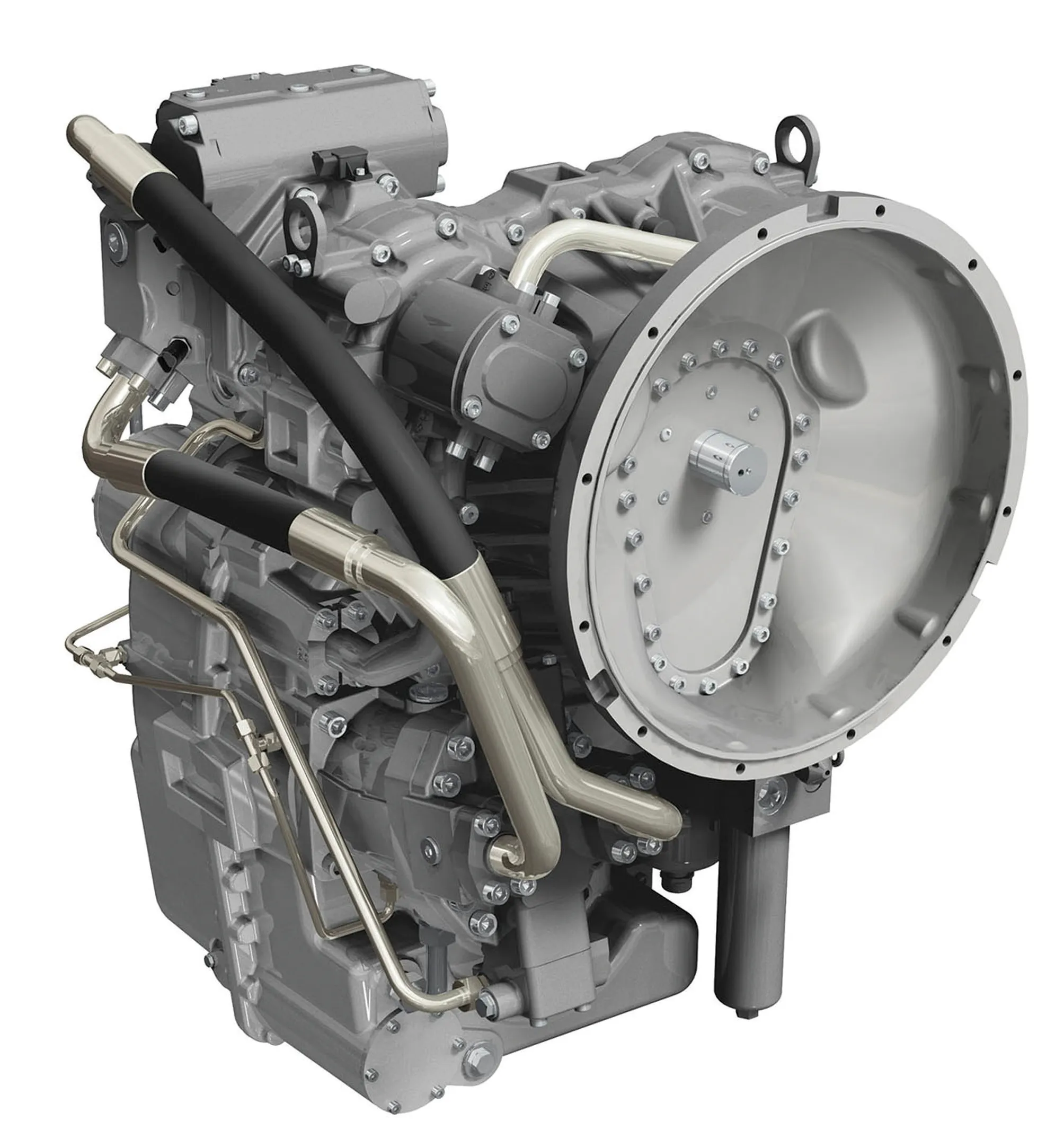
The new 2606-E13TA engine from Perkins delivers a market-leading power density according to the firm. This 13litre unit delivers similar outputs to earlier generation 15litre and even 18litre single turbo engines. According to the company: “We have worked with the customers to find out what they need.”
The engine features a narrow design with the geartrain at the rear and the alternator mounted directly on the block.
Increased uptime, reduced downtime and easier servicing mean that the total cost of ownership has been reduced. Service intervals have increased to 1,000 hours.
Benefitting also from a variable geometry turbo, the engine can deliver from 340-515kW and is HVO ready, with the potential for alternative fuels such as methanol, ethanol and hydrogen.
Meanwhile, the improved 904 J-E36TA unit now offers a maximum power rating of 106kW, with a power-density increase of 6% and a torque increase of 3%.
The firm is also working on its six-cylinder 1206 engine being developed as a multi-fuel project trialling ethanol, methanol, biomethane and hydrogen.
According to a Perkins spokesperson: “It’s in the test cell right now and is one year into a three-year programme.









